Clarity comes before action: Without a clear mission, your ministry will struggle to last.
No plan, no progress: A mission statement and strategy prevent wasted effort.
Resources impact reach: Secure funding, gather support, and launch with confidence.
Growth requires flexibility: Keep evaluating, adjusting, and celebrating what God is doing.
Starting a ministry is one of my favorite things as a church leader. It's thrilling... but, when those initiatives fizzle out... it's crushing. Case in point:
When I was fresh out of bible college, I volunteered to spearhead the launch of a new ministry in my church. It was intended to create community and resource my church's creative and artistic folks. The potential impact dazzled me. I wanted to see services enriched with original music and artwork. Fresh, compelling dramas played out on stage. A thriving community of artists. So, I jumped in with both feet.
Initially, I got a ton of interest and engagement, but as weeks stretched into months, things began to sour. Interest and attendance waned. Finally, 6-8 months later, frustrated and confused, I threw in the towel.
Ministries don’t usually fail because of a lack of vision or passion. They fail because of poor structure and resource mismanagement. I experienced the symptoms of this first-hand.
- Struggling to define your ministry’s mission and who it serves
- Wasting time on activities that don’t move your vision forward
- Difficulty finding committed team members
- Logistical roadblocks that stall growth
I jumped to action too quickly, neglecting to take steps to build a strong foundation. Whether you’re launching a new church initiative or looking to build a more broader outreach, you need clarity, a clear, honest plan, and the right tools (like church management software).
Four Phases of Starting a Ministry
Start strong—build something that lasts!
Today, I'd like to lay out steps to take (and common pitfalls to avoid) as you set your new ministry up for long-term success. This guide will walk you through four key phases:
- Preparation – Clarify your purpose and mission.
- Planning – Build a team and craft a strategy.
- Implementation – Launch your ministry with confidence.
- Growth – Refine and expand as God leads.
Each phase builds on the last, keeping your ministry rooted in prayer, focused on impact, and set up for long-term success.
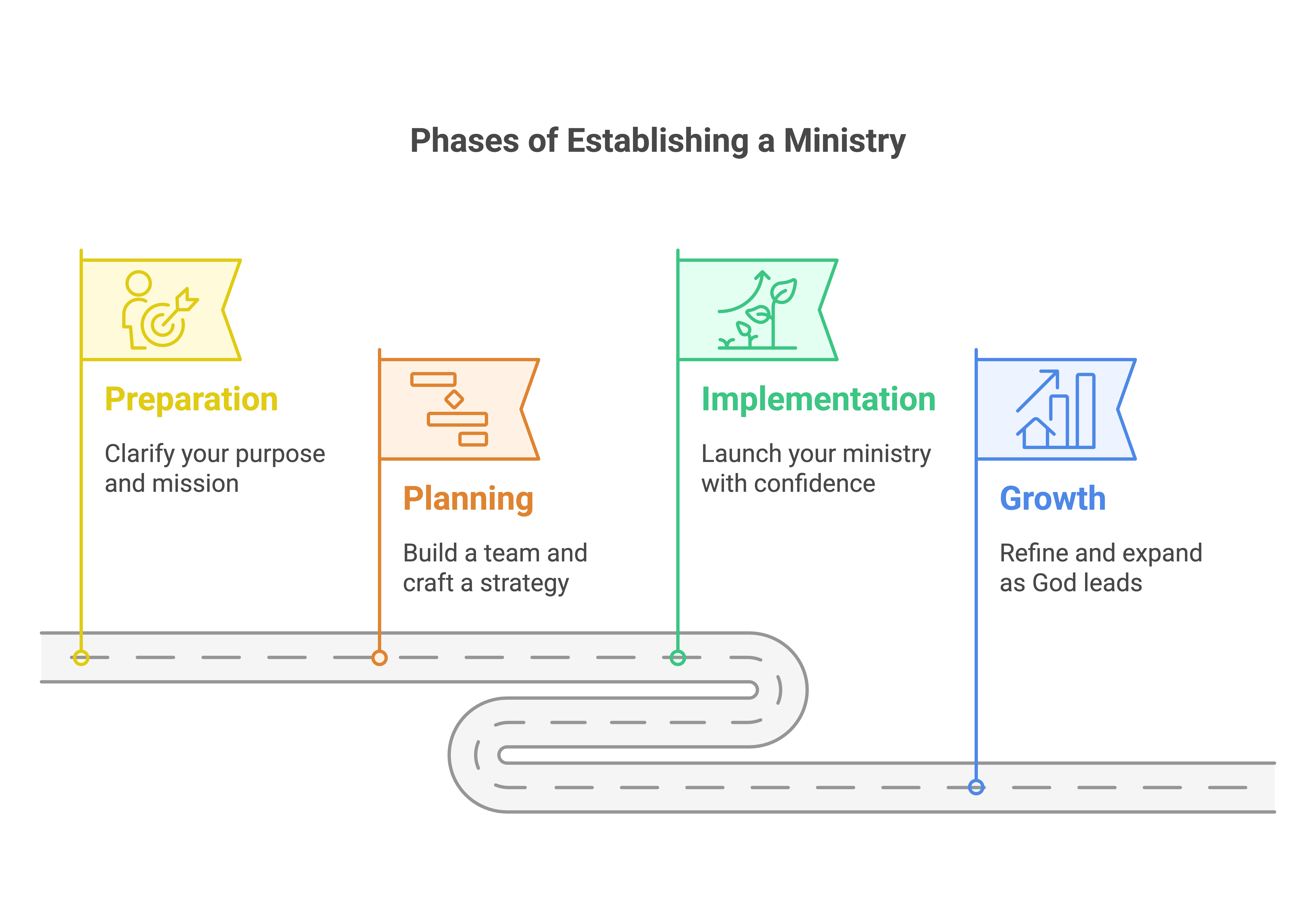
Phase 1: Preparation
Most new ministry initiatives fall into one of two categories (with most landing in the first):
- A new team within the church – This includes ministries like a men’s group, young adults gathering, or a youth game night. These operate under the church’s leadership and budget.
- An external initiative with an outward focus – This could be a private school, pregnancy center, or shelter for at-risk youth. These often function best as separate organizations with their own leadership, finances, structure, finance committee, budgeting, and funding.
This guide primarily focuses on church-based ministries, but I’ll touch on external initiatives where it makes sense.

Step 1: Define Your Ministry’s Purpose and Impact
Who are you serving, and what challenges come with reaching them?
Start by defining your target audience and the impact you hope to make. Picture your ministry up and running. What practical changes will it bring? What deeper, intangible impact do you want to see? Then, consider the obstacles—funding, participation, leadership: how will you overcome them?
- What difference do you hope to make in people’s lives?
- Does it align with your church’s mission?
- What roadblocks might get in the way?
You'll need other folks to contribute and provide their perspective and insights!
How Radical Mentoring Grew a Church from 100 to 1,000
Pastor Brian Moore of Crosspointe Church (Yorba Linda, CA) saw the men’s ministry struggling and took action. He launched a small-group mentoring approach that didn’t just revive the ministry—it helped the church grow from 100 to nearly 1,000 people.
It started small.
Moore gathered eight men—four staff, four lay leaders. After a year, the four participants were ready to lead their own groups. By year two, about twenty trained leaders were in place.
This discipleship model—leaders training leaders—transformed not just the participants but their families and the surrounding community. It all began with a clear understanding of the church’s needs and a few men willing to serve Jesus.
Step 2: Discover and Address Real Needs in Your Community
A ministry only works if it meets a real need. (You’d be surprised how many “great ideas” aren’t actually needed.)
Observe your community. Talk to people. Get real feedback. Brainstorm with other leaders in your church - especially those whose skillset and mindset is different than yours. Ask questions like:
- What assumptions am I making about this situation?
- What’s missing in the lives of the people we hope to serve?
- What do they actually need?
Clearly define the problem your ministry will solve. Is it about discipleship? Outreach? A specific group of people? Use real data—community surveys, news reports, church feedback—to make sure you’re meeting a need, not just launching another program.
Step 3: Craft a Mission Statement to Guide Your Ministry
A mission statement keeps your ministry focused. Without it, burnout and frustration are inevitable.
Your mission statement should be clear, action-oriented, and aligned with your church’s values. It explains why the ministry exists and what it hopes to accomplish. Keep it short and compelling.
Examples of Strong Mission Statements:
- charity:water – "We’re bringing clean and safe drinking water to people around the world."
- John 15 Academy – "We restore the lost art of being family."
- Elora House – "We provide safe housing and support for women who are victims of sexual exploitation and human trafficking."
- Mustard Seed – "To eliminate homelessness and reduce poverty where we serve."
A strong mission statement gives your ministry a foundation. Without it, you're just guessing at what success looks like.
Joshua Gordon
Phase 2: Planning
Preparation is the foundation, but church strategic planning is what builds the framework for your ministry to grow. This phase is where your vision becomes tangible. It’s about putting healthy, sustainable church systems in place, creating a roadmap, and assembling a team to share the journey. The planning stage ensures you don’t get lost in the details or overwhelmed by the big picture.
With your mission in focus, this phase will help you:
- Assemble the right people to bring your vision to life.
- Create clear, actionable steps to guide your ministry’s early days.
- Secure the resources you need to start strong.
Think of it as designing the structure before building the house. A thoughtful plan will help you and your team navigate the challenges ahead with confidence.
Step 4: Assemble a Passionate Team to Share the Vision
No one builds a ministry alone. Without a committed team, your vision won’t get far. You need people who will embrace the mission, help shape it, and share the load of launching and running the ministry.
Look for people who are already passionate about the ministry’s purpose and who align with your values. When discussing their involvement with them, remember:
Clarity is key—the more specific you are about expectations, the easier it is for people to say yes. A vague invitation leads to hesitation.
Joshua Gordon
Choosing the Right Leadership Structure
Will this ministry have one leader or a team of joint leaders? Each option has pros and cons:
- Single Leader – Decisions can be made quickly, but leadership burnout is a real risk.
- Joint Leadership – Shared responsibility prevents burnout, but decision-making can take longer.
Rushing the process or choosing people just to fill roles will cause problems later. Take time to prayerfully consider who should lead and how the team should function.
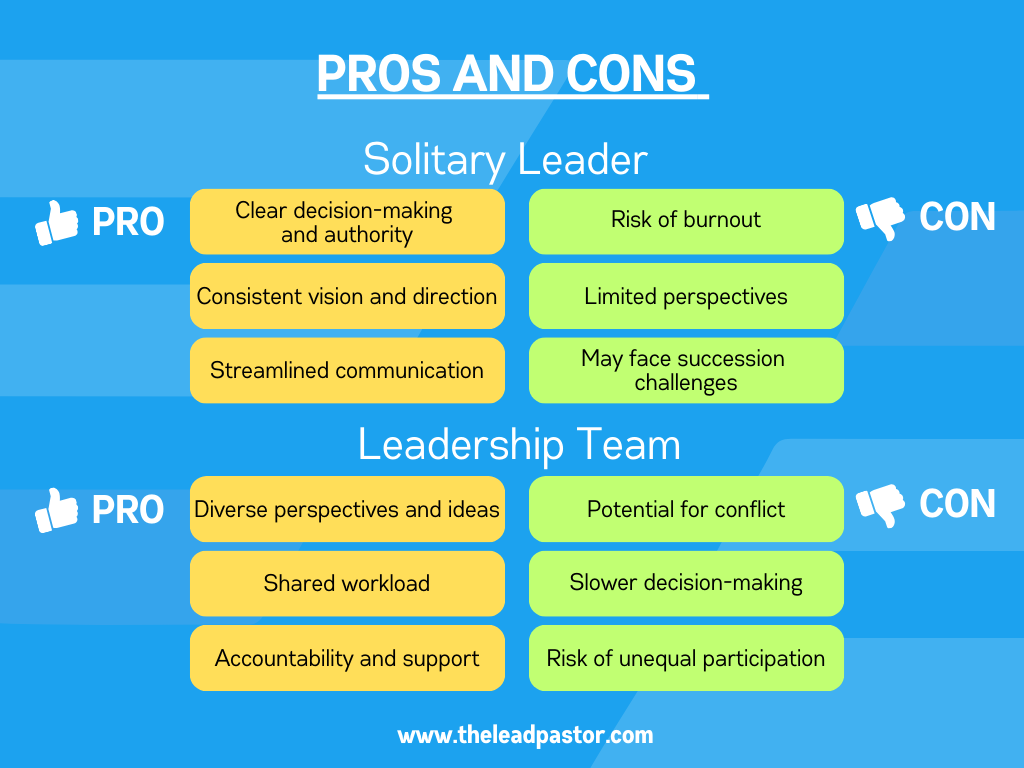
Create a Job Description for Your Ministry Leader(s)
A clear job description brings focus to the role and keeps expectations aligned as the ministry grows. Need help? Check out this sample job description to get started:
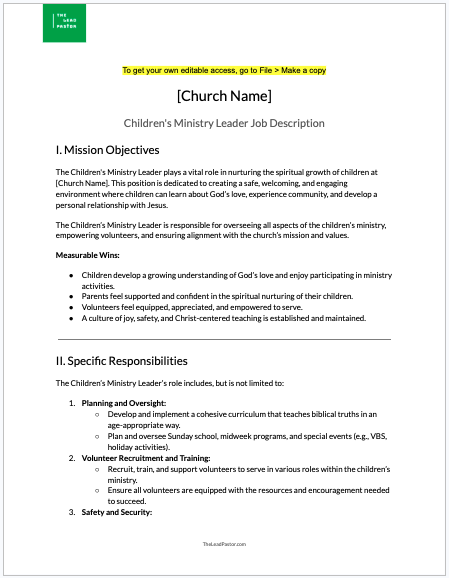
Step 5: Develop a Roadmap for Success
It’s easy to dream about a new ministry from a thousand-foot view. But once you're in the details, it’s easy to get lost. A roadmap turns vision into actionable steps.
How to Create Your Roadmap
Keep your mission and vision in mind as you plan with your team. This process can be formal or informal.
The vision for New Life Fellowship started in a living room, where leaders simply shared their hearts and their hope for a church where people could grow in faith and fellowship. Your plan doesn’t need to be fancy—this is God’s ministry, and you are simply stewarding it.
Start with prayer, then get to work:
- Outline your goals. How will you measure success? Use that to define clear goals.
- Plan your programs. Summarize the services, events, or activities your ministry will provide.
- Break tasks into steps. Make action items manageable and assign them to team members.
- Start small, but think long-term. Ministry growth takes time. Walk humbly and take it one step at a time.
He has told you, O man, what is good; And what does the Lord require of you but to do justice, to love kindness, and to walk humbly with your God?
Micah 6:8
Step 6: Gather Resources and Trust God’s Provision
Every ministry needs tools, people, and funding to function. Success and sustainability depend on identifying what you need—and trusting God to provide.
How to Do This:
- Assess your needs. List everything required to execute your plan. Yes, budgets are tight, but don’t limit God before you start. Be practical, but dream a little. Where might Jesus surprise you?
- Set your budget. Plan your startup and ongoing costs. If needed, submit your budget for approval from your church finance committee.
- Secure meeting space. Will your ministry meet in person or online? Where will gatherings take place?
- Gather materials. Depending on your ministry, you may need office supplies, games, craft materials, snacks, etc.
- Explore fundraising options. Will funding come from the church, community partnerships, or donations?
Ministry work requires faithful planning and faithful trust. Prepare well, then step out in faith.
Joshua GOrdon
Elora House: Safe Haven for Survivors of Human Trafficking
Elora House was born out of a growing need—women escaping sex trafficking had nowhere to go. Luisa Krause, after years of helping women in abusive situations, saw the gap and decided to fill it.
Her passion for this ministry came from both personal experience and a seminar on human trafficking that opened her eyes to the crisis. She realized survivors needed more than just escape; they needed a safe place to heal and rebuild.
Key Steps in Launching the Ministry:
- Identify the Need – Krause recognized the urgent need for a safe place for trafficking survivors through firsthand encounters and educational seminars.
- Build a Team – She gathered staff and volunteers to shape the vision and create a sustainable plan.
- Secure Resources – Community support and donations provided the funding, staffing, and infrastructure needed to launch.
- Form Partnerships – Strong relationships with local police and Victim Services ensured survivors could be referred and supported effectively.
- Develop Holistic Programs – Elora House offers shelter, therapy, life skills training, and wellness programs to help survivors heal and rebuild their lives.
These steps—identifying the need, building a team, securing resources, forming partnerships, and developing programs—can guide any ministry looking to make a lasting impact.
Step 7: Set Up Your Ministry’s Legal and Administrative Framework
*NOTE: if your ministry is part of your church (not a separate legal entity, you can likely skip this step.*
A solid legal and administrative structure will save you headaches down the road. If you don’t set things up correctly before launch, you could find yourself buried in red tape later.
How to Do This:
Clearly define how your ministry will operate. Will it function under your church’s umbrella or as an independent organization? If it’s a separate entity, you may need to look into:
- Tax-exempt status, incorporation, or necessary permits
- Charitable status – Will your ministry need to apply?
- Policies and bylaws – Have you documented how decisions will be made?
- A governing board – Does your ministry need oversight?
- Liability insurance – What coverage is necessary?
Also, keep proper records from day one. This includes financial records, volunteer agreements, and background checks where required. Consult legal and financial professionals to ensure you comply with local, state, and federal nonprofit laws.
Phase 3: Implementation
It’s time to put your plan into action. Your ministry is now serving, growing, and adapting.
But launching isn’t just about starting—it’s about staying flexible and responsive to how God leads. Ministries thrive when they adjust and improve over time.
In this phase, you’ll focus on:
- Launching your ministry and engaging your community
- Overcoming challenges and making adjustments as needed
- Celebrating wins and building momentum for long-term growth
Every ministry’s journey looks different, but one thing is certain—you’ll learn and grow along the way. This is God’s work, and He’s with you every step of the way.
Step 8: Launch Your Ministry with Confidence
Launch time—exciting, a little scary… and usually a great excuse for a party! Your launch can take different forms, but most fall into two approaches:

1. Soft Launch: Testing the Waters
A soft launch lets you start while still in test mode. When planting New Life Fellowship, we began with a soft launch because we knew there were still kinks to work out. It allowed us to test programs, tweak systems, and adjust as needed before going public in a big way.
2. Hard Launch: Go Big from Day One
A hard launch happens when everything is in place—plans are solid, teams are trained, and all the wrinkles are ironed out. This often involves a big event, strong promotion, and a bold public introduction. A grand launch builds momentum and excitement right away.
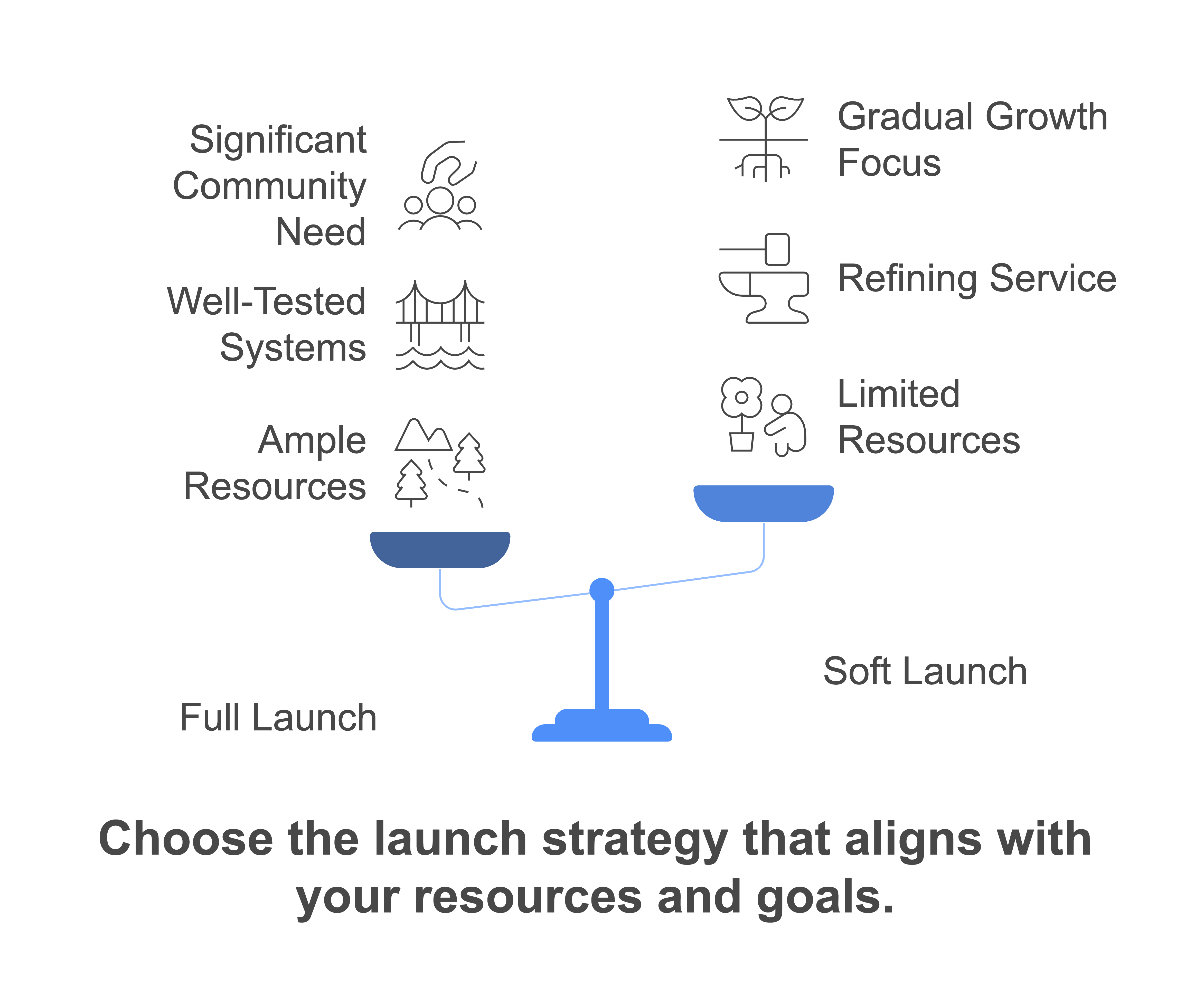
Hard v Soft... which is best?
A full launch might be the best option if:
- You have enough resources and volunteers to sustain the ministry.
- Your plans and systems are well-tested.
- There is a significant need or urgency in your community.
A soft launch might be a better fit if:
- You’re still refining how best to serve your community.
- You have a small team, limited budget, or tight space and want to grow gradually.
- You want to test and improve programs before going public in a big way.
How to Launch Well:
- Host a launch event or first gathering that brings people together and clearly shares your vision.
- Communicate clearly what your ministry is about, what to expect in the coming months, and how people can get involved.
- Invite others to partner with you. Not everyone can volunteer, but they can still pray, spread the word, or support financially. Consistent monthly donors are the most reliable way to fund your ministry long-term. Ask supporters to consider a recurring gift.
Step 9: Adjust and Grow as God Leads
Ministries flourish when they adapt. You’ll hit roadblocks—expect them. What matters is how you adjust, learn, and keep moving forward.
How to Keep Growing:
- Regularly evaluate progress. Get feedback from participants and leaders. Make adjustments as needed.
- Celebrate wins. Even small victories build momentum and encourage your team.
- Invest in your team. Keep them spiritually and practically equipped to sustain passion and competency.
- Show appreciation. Consistently remind your team that they are valued and loved.
- Stay rooted in prayer. Ministry isn’t just about strategy—it’s about seeking Jesus’ guidance daily.
- Communicate the mission. Keep your team and community engaged by regularly sharing the vision, the impact, and the needs of the ministry.
Your ministry will grow and evolve as you stay flexible, stay faithful, and keep trusting God to lead the way.
COOL Ministries (Houston, TX): Breaking Chains and Changing Lives
COOL Ministries was founded by pastors Boyd and Jan Harrell, who experienced firsthand the challenges of drug and alcohol addiction. Their personal journey of recovery through faith inspired them to start this ministry in 1999.
One in five offenders in Texas will re-offend and wind up back in jail after being released. Pastor Boyd wanted to help these people from the inside out.
His passion is to bring them to Jesus to allow Him to bring the healing and hope they need to move forward in their lives. They started small and continued to grow and develop the ministry as they evaluated their impact on the community they served.
Key aspects of their start include:
- They expanded to include various programs, including societal reintegration support.
- Focused on serving those in prisons, jails, drug treatment facilities, and transitional living centers.
- Developed a Christ-centered 12-step recovery program called "Breaking the Chains."
- The program was expanded to outreach on college campuses, which led to the founding of a church.
Final Encouragement
Starting a ministry is no small task, but remember—you’re not doing it alone. If Jesus has called you to this work, He will equip you for it.
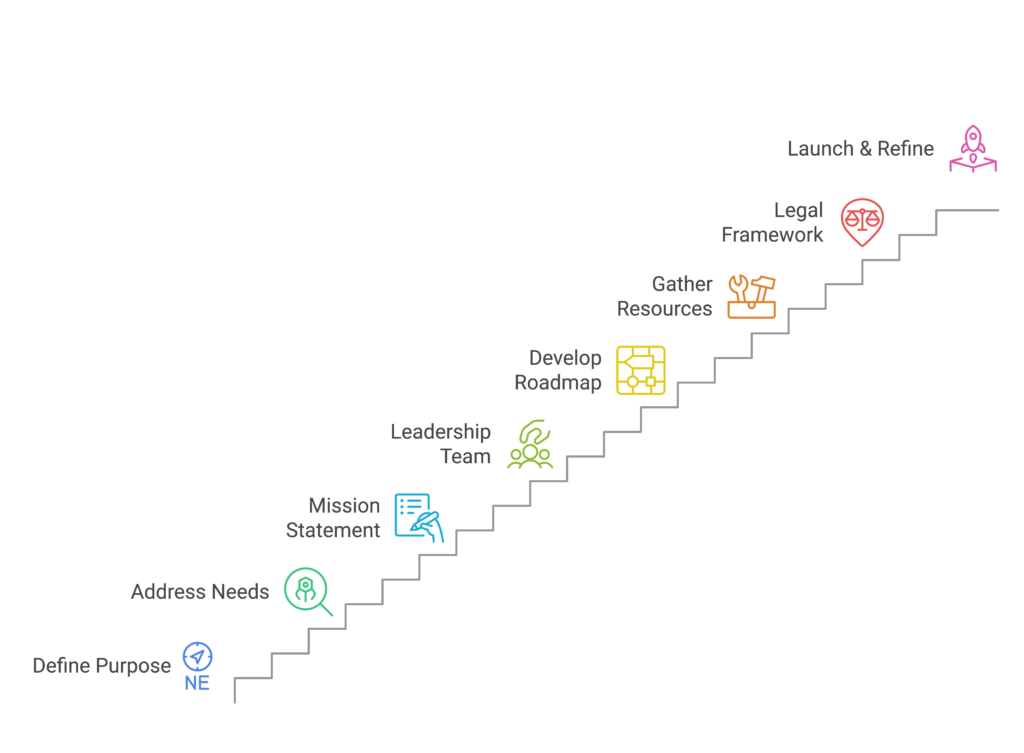
Some last words of advice:
- Start with prayer. Build everything on a foundation of faith. “Unless the Lord builds the house, the builders labor in vain” (Psalm 127:1).
- Clarify your mission and vision. Stay focused on why your ministry exists and who it serves.
- Build a strong team. Surround yourself with people who share your passion and complement your gifts.
- Plan strategically. A clear roadmap keeps you moving forward, even when challenges come.
- Stay accountable. Be transparent with your team, those you serve, and your supporters.
This journey is a leap of faith, but it’s one God has prepared you to take. Lean on Him, trust His guidance, and take the next step with confidence. The work you’re about to do will make an eternal impact.
And you don’t have to do it alone.

Join The Lead Pastor Newsletter
Want more practical ministry advice and encouragement delivered straight to your inbox? Subscribe to The Lead Pastor Newsletter today. You’ll get expert insights, tools, and tips to help you lead with clarity and confidence—plus exclusive resources to empower you in your ministry journey.


